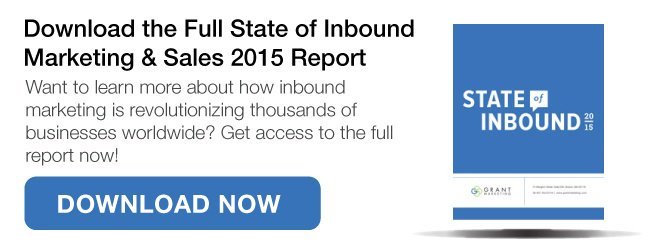Getting a Return on Your Marketing Strategy
Let’s face it, businesses don’t succeed unless a sale happens. The recently released “State of Inbound 2015” study by HubSpot, links marketing ROI to the sales function.
According to the survey of more than 4,000 marketers worldwide, the number one challenge of B2B companies is “Proving the ROI of Marketing Activities.” The top sales priority of these companies is to “improve the efficiency of the sales funnel, and closing more deals.” What better way to prove ROI than to see an increase in sales due to an improvement of the efficiency of the sales funnel. Generating leads is the job of marketing and converting those leads into company sales is the job of the sales team. Marketing and sales teams that work together are more successful at increasing ROI. 
Filling the Gap between Marketing and Sales
Inbound marketing, marketing automation, and the use of contact relationship management (CRM) platforms can help bridge the gap between marketing and sales. (For additional information on using a CRM, see our Beginner's Guide to CRM.) No matter the size of the company, the research shows that inbound is the preferred marketing method for all companies that spend under $5M annually on marketing. In fact, if your organization spends less than $100,000 on marketing annually, you’re four times more likely to practice inbound than outbound. Even more interesting? The study revealed that regardless of marketing spend, a company was three times as likely to see a higher ROI on inbound marketing campaigns than on outbound. Impressive stats for inbound marketing ROI.
So, how are you going to measure your marketing ROI? Marketing automation software has become an essential tool in measuring the success of inbound marketing (and even outbound) efforts. Many marketing automation software platforms integrate with a CRM platform. HubSpot integrates seamlessly with Salesforce, for example. This enables the marketing department and sales department to more easily work together. More and more companies are now creating sales and marketing agreements (SLAs). According to the State of Inbound 2015 study, those who had a formal agreement between the sales and marketing departments were more likely to see higher ROI on marketing dollars in 2015, receive a budget increase, and expand their sales teams. Bottom line: create an SLA if you don’t already have one.
There is so much insightful info included in the State of Inbound 2015. Click here to read more and download it now.


